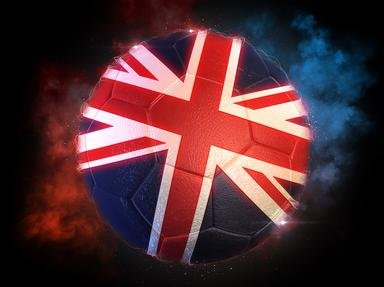Quiz Answer Key and Fun Facts
1. Which of these four Scottish Football League clubs is the odd one out, from a geographic standpoint?
2. From the point of view of Leeds United, which of these does not belong with the others?
3. In terms of Northern Ireland international footballers, who does not belong?
4. From the perspective of Manchester City home grounds, which does not belong?
5. Of these Australians who have played in the Football League or Scottish Football League, who is the odd one out in terms of representing the Socceroos at full international level?
6. Of the following clubs that were 'elected' to the Football League between 1950 and 1979, which one subsequently lost its League status again?
7. Which of these four Football League clubs is the odd one out, from a geographic standpoint?
8. In terms of the aggregate of goals scored in a League Cup Final (or its latter incarnations), which of these Finals was the odd one out?
9. From the point of view of British record transfer fees (i.e. involving to or from at least one British club), which of these of the following players was never involved in one?
10. From the perspective of FA Cup Final venues, which of these is the odd one out?
Source: Author
FussBudget
This quiz was reviewed by FunTrivia editor
Nightmare before going online.
Any errors found in FunTrivia content are routinely corrected through our feedback system.


